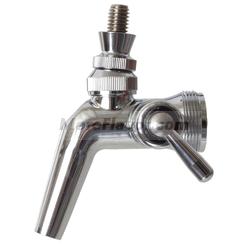chally
Well-Known Member
Hi, all. First post, so go easy on me. 
I just purchased a pre-made home kegerator, which came pre-assembled with 7' of vinyl tubing beer line. I'm planning to replace the line with Bev-Seal tubing. After looking into some of the threads on here regarding line length, however, it seems like different lengths of line would be required to achieve an ideal pour for different styles. Because of the way the kegerator is assembled, swapping beer lines out seems like a real pain.
Would there be any issues if I used a base length of beer line (e.g., 7'), installed a stainless steel hose barb to MFL fitting on one end, then cut additional lengths of line (e.g., 3', 7', and 10') to simply screw on as needed for the style (using a hose barb to FFL swivel nut)? I assume it would throw off the line pressure calculations a bit. Are there any other issues I should be aware of?
One of the added benefits is that I could then wrap the initial 7' of beer line in soft copper tubing to efficiently chill the line in the tower.
Thoughts?

I just purchased a pre-made home kegerator, which came pre-assembled with 7' of vinyl tubing beer line. I'm planning to replace the line with Bev-Seal tubing. After looking into some of the threads on here regarding line length, however, it seems like different lengths of line would be required to achieve an ideal pour for different styles. Because of the way the kegerator is assembled, swapping beer lines out seems like a real pain.
Would there be any issues if I used a base length of beer line (e.g., 7'), installed a stainless steel hose barb to MFL fitting on one end, then cut additional lengths of line (e.g., 3', 7', and 10') to simply screw on as needed for the style (using a hose barb to FFL swivel nut)? I assume it would throw off the line pressure calculations a bit. Are there any other issues I should be aware of?
One of the added benefits is that I could then wrap the initial 7' of beer line in soft copper tubing to efficiently chill the line in the tower.
Thoughts?



